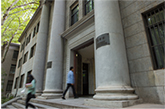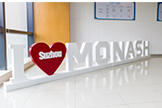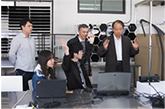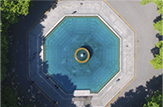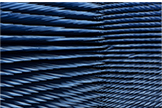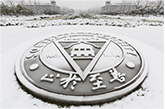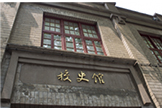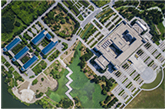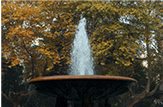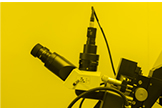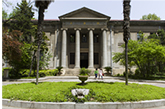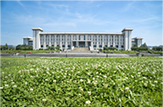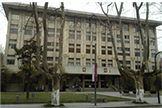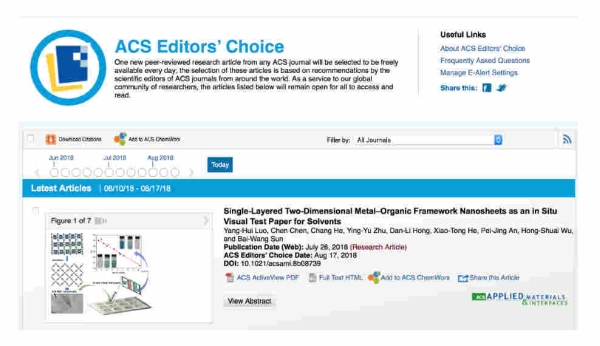
Recently, the team of Sun Baiwang and Luo Yanghui from the School of Chemistry and Chemical Engineering of Southeast University have achieved significant progress in the development and application of ultra-thin 2D MOF (metal-organic framework) nanomaterials. The single-layer two-dimensional nano-sheets as prepared [Co(CNS)2(pyz)2]n(pyz=pyrazine) showed specificity response to solvents of different polarities, and thus successfully developed an online visual test strip of solvent. Relevant results were published in ACS Applied Materials & nterfaces under the title of Single-Layered Two-Dimensional Metal-Organic Framework Nanosheets as an in Situ Visual Test Paper for Solvents (DOI: 10.1021/acsami. 8b08739), which has attracted wide concerns and was recommended by American Chemical Society (ACS) as one of the 365 featured articles of ACS Editors' Choice in 2018. As a representative of the journal, it became a permanent browsing resource open to the public for free.
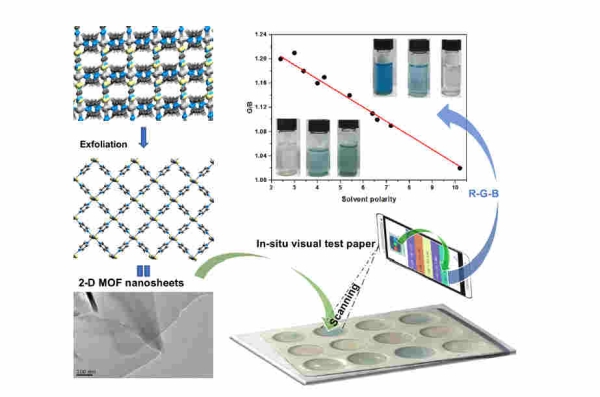
In recent years, researches on ultra-thin two-dimensional nanomaterials other than graphene has attracted great concerns. Among them, the two-dimensional MOF nanomaterials indicate great application potentials in detection, catalysis and adsorption/separation, etc. because of its adjustable structure and function, highly ordered pore arrangement and omnidirectional exposed active sites. In this study, a single-layer two-dimensional nano-sheet [Co(CNS)2 (pyz)2]n (pyz=pyrazine) was successfully prepared by a solvent-assisted ultrasonic stripping technology. On this basis, a kind of test strip based on ultra-thin two-dimensional nanomaterial was developed and realized the portable and in-situ visual detection strategy by means of the colour-browsing APP scanning technology applied to the smart phone. This strategy has indicated enormous practical application potentials in terms of explosive detection, toxic molecular detection, molecular probes and reaction process tracking, etc..
This research project was funded by National Natural Science Foundation of China (21701023), Natural Science Foundation of Jiangsu Province (BK20170660) and Southeast University’s High-Level Paper Project.
ACS Editors’ Choice is an initiative adopted by American Chemical Society (ACS) to expand its influences since January 1, 2014. Such service selects one paper of great scientific significance from 44 subscription journals sponsored by ACS on each day. Upon nomination and recommendation by over 400 ACS periodical editors, such paper as selected will become a permanent browsing resource for free. In addition, the papers selected by ACS Editors’ Choice will be distributed on ACS homepage and scroll for 7 days in the form of picture, equivalent to the headline of the day. The selected papers recommended by each ACS periodical must be the best of all papers adopted by each periodical. Peter J. Stang, editor of Journal of American Chemical Society (JACS) (academician of American Academy of Sciences, American Academy of Arts and Sciences, Chinese Academy of Sciences and Hungarian Academy of Sciences) pointed out that, ideally, every paper recommended by the editors would contain some new ideas that may transform the intrinsic mode of the field.


